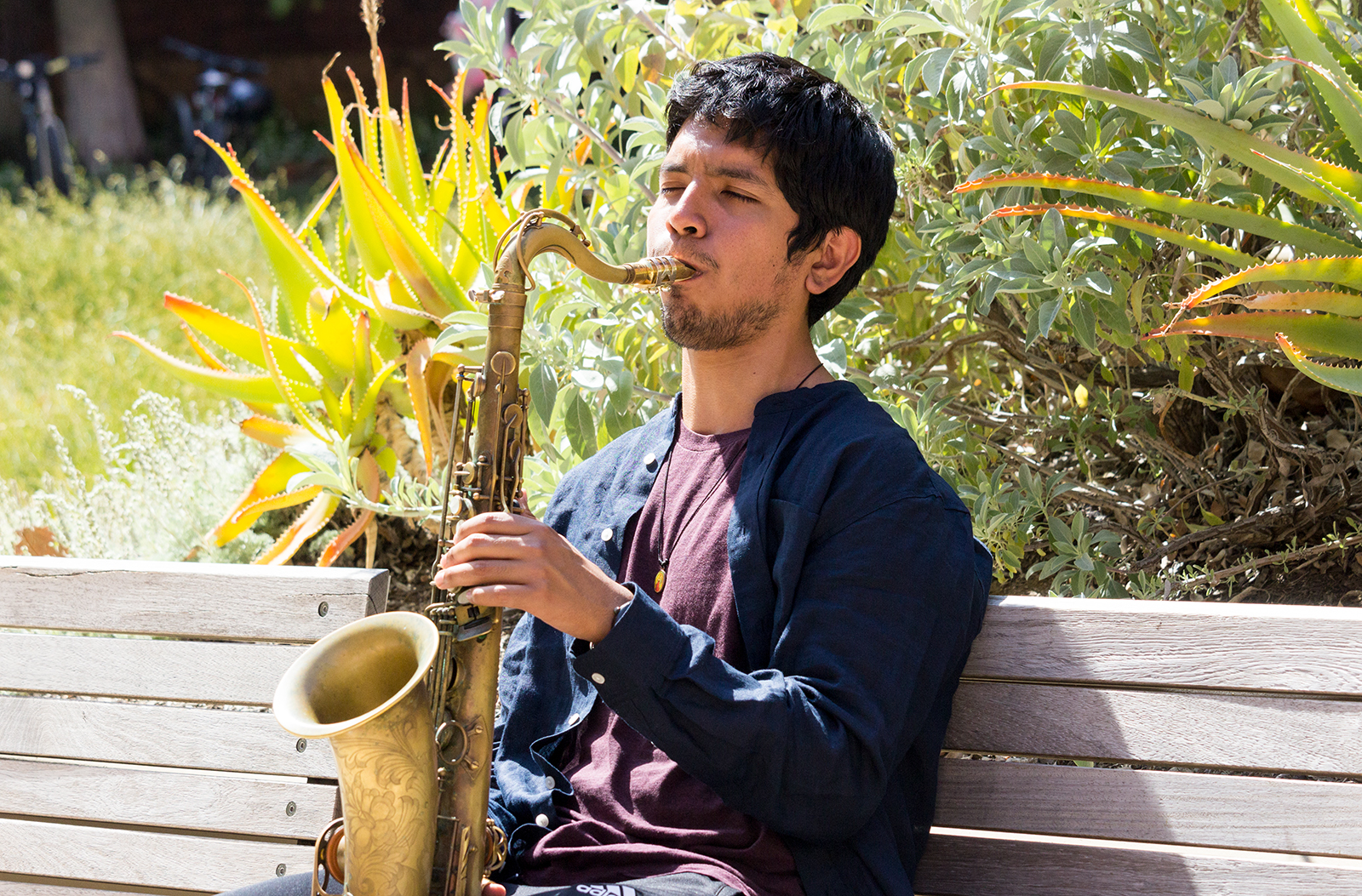Jazz students engage with ensembles, merge multiple musical styles

Julio Flavio, a graduate student in jazz, will perform at “Sphere Project,” an interdisciplinary music event, Sunday. Instead of incorporating his typical jazz stylings into the composition, he will focus on Hindustani classical music, he said. (Anna Moreno-Takegami/Daily Bruin)
"Sphere Project"
Schoenberg Hall
Sunday, May 20
Free
By Ethan Pak
May 14, 2018 8:25 p.m.
This post was updated May 16 at 4:11 p.m.
Students will incorporate elements from Hindustani classical music and heavy metal music in their original compositions Sunday night.
Students from the Thelonious Monk Institute of Jazz Performance at UCLA will collaborate with the UCLA Herb Alpert School of Music to demonstrate their interdisciplinary compositions at “Sphere Project.” The event will showcase compositions and collaborative pieces that incorporate elements from various types of regional music taught in the ethnomusicology department, said Jon Hatamiya, a graduate student in jazz.
“For us, it’s a good opportunity to collaborate with some of the other musicians from the music school,” Hatamiya said. “It gives an opportunity to interact with different styles of music that are being studied at the music school and incorporate those into what we’re doing.”
The showcase features performers in two roles – the composer, who writes each individual piece, and the collaborator, who teaches the composer about a specific musical style.
Hatamiya said his compositions feature a brass quintet from the Brass Ensemble and a Chinese flute from the Music of China Ensemble. He began the composition process early in fall quarter after attending multiple rehearsals and presentations from different ethnomusicology ensembles.
Instructors from each ensemble provided a brief lecture about specific music traditions, the system of learning the music and the different instruments that may not have been typical in jazz or Western music. Afterward, Hatamiya determined which ensemble worked best with his composition style and began working with them, he said.
“It’s pretty much a quick trip through all these different types of music,” Hatamiya said. “We try to learn as much as we could about all of them in a short amount of time.”
Although he is primarily a jazz musician, Hatamiya said he tried to create compositions that feature influences from multiple music styles to present a challenge for the performers. He incorporated improvisational jazz and contemporary classical music elements, along with rock and metal music elements into his compositions. Sections of the piece utilize rhythmic grooves and bass lines as seen in typical metal or rock music, and, although Hatamiya lacks heavy metal instruments, he said he hopes to achieve the same effect with the brass and rhythm section.
“We’re collaborating with so many different types of musicians from different traditions. It’s hard to figure out how you’re going to tackle that when you have so many different people from so many different backgrounds,” Hatamiya said. “My personal approach is to write something that everyone’s going to have to make adjustments (to).”
Specific musical challenges can arise when trying to blend different styles from various regions. For example, he said the Music of China Ensemble player’s flute is restricted to one key, whereas Western instruments can easily switch between keys. In order for the flute to switch keys, the player would have to switch to a completely different flute just to play the notes in the other scale, he said.
Ram Kaundinya, a fourth-year cognitive science student in the Charles Mingus Ensemble, collaborated with Monk Institute students Alexander Hahn and Julio Maza by providing them with information on Hindustani classical music, a type of music predominant in northern India. In his presentation to the students, Kaundinya said he played the tabla, a type of percussive instrument, alongside his sister who performed the vocals. He also talked about the music structure and melodic elements, particularly the raaga jog, a type of melodic scale or style.
“(The raaga jog) is actually very similar to the Western blues. Of course, it has a very different flavor to it; it’s approached in its own unique Indian classical way,” Kaundinya said. “It has a mood of meditation, … just sort of a deep contemplative sort of feeling.”
Maza, a graduate student in jazz, said learning about a huge musical tradition and determining which bits of information to utilize in his compositions presented a major challenge. At the end of his meetings with Kaundinya, Maza said he decided only to use notes from the raaga jog scale in his composition.
As a student of the Monk Institute, Maza said he is a jazz musician. However, for Sunday’s performance, he will not incorporate any of his typical jazz stylings into the composition, focusing mainly on the traditions of Hindustani classical music, he said.
“We were thinking about the sound of the band (and) elements from Indian music. I wasn’t thinking about jazz at all,” Maza said. “Because, at the end, you can’t force something.”
Even though incorporating new music styles is a challenge, Kaundinya said it is a learning experience for both the composer and the collaborator. For the composers, the collaboration allows them to connect to new musical styles, while for the collaborators, it allows them to figure out how to communicate and share knowledge with people who are not familiar with the music, he said.
“In a way, (it) both preserves the knowledge and core of what I know and communicates in a new light to these composers who are trying to take these concepts and present them in a new way,” Kaundinya said. “It’s presenting more of a connection between two worlds, two different people, two different backgrounds that you get a glimpse of.”

